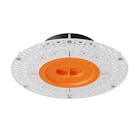Synopsys announces 2021 Robert S. Hilbert Memorial Optical Design Competition results
Source: Synopsys
We are pleased to announce the winners of Synopsys’ 2021 Robert S. Hilbert Memorial Optical Design Competition. Our annual competition celebrates exceptional optical design research projects by college students in North America who use Synopsys’ optical software solutions. The competition is open to students working toward a bachelor’s, master’s, or doctorate degree.
This year, students from the California Polytechnic State University at San Luis Obispo, Columbia University, the University of Arizona, the University of North Carolina at Charlotte, and the University of Rochester received awards for their submissions.
“We appreciate the time and dedication the students participating in this year’s competition put into their studies,” said Stuart David, vice president of Synopsys Optical Solutions. “We had a record number of entries from many schools across North America, and the bar was set high. I congratulate the 2021 award winners, and sincerely thank each student who shared their hard work with us.”
Meet the 2021 Award Recipients
Amir Hashemizad, California Polytechnic State University
Amir Hashemizad is an undergraduate in electrical engineering at California Polytechnic State University at San Luis Obispo. Hashemizad received an award for his project titled, “SOI Subwavelength Grating Waveguide.” He used the RSoft Photonic Device Tools to design a silicon-on-insulator (SOI) waveguide, a nano-scale photonic component used in telecommunications.
“I’m very grateful to receive this award as I further my academic interest in photonics and optics,” said Hashemizad. “This project was my first real foray into the field and it sure feels like a good sign. I’d like to thank Dr. Dennis Derickson for a great introduction to photonics, and Dr. Ying Zhou for her time and effort introducing us to the RSoft tools.”
Kaylx Jang, Columbia University
Kaylx Jang is a Ph.D. candidate in electrical engineering at Columbia University studying photonics in Professor Keren Bergman’s group. Jang received an award for his project titled, “40-Wavelength, High-Density, Low Loss, C-band Demultiplexer.” He used the PIC Design Suite to design a dense wavelength-division multiplexing (DWDM) receiver system for data communications.
“This project and software were integral in building a strong intellectual foundation for my research,” said Jang. “I am grateful for the support of my professor Alex Meng and fellow classmates. I appreciate that Synopsys is hosting this competition and awarding students for their efforts.”
Elliott Kwan, University of Arizona
Elliott Kwan is a Ph.D. candidate in optical sciences at the University of Arizona. Kwan received an award for his project titled, “Tri-Aperture Monocular Laparoscopic Objective for Stereoscopic and Wide Field of View Acquisition.” He used CODE V to create a laparoscope lens design that provides simultaneous stereoscopic views.
“It has been a pleasure learning optical design in CODE V,” said Kwan. “The experience of designing and prototyping a novel laparoscope with this software has strengthened my confidence as an optical engineer. I am grateful for receiving this award, and I look forward to continuing pushing the boundaries of optical technology.”
Jace Malm, Avalon McLeod, Lam Nguyen, and Sebastian Valencia, University of Arizona
Jace Malm, Avalon McLeod, Lam Nguyen, and Sebastian Valencia are undergraduates in optical sciences at the University of Arizona. The team received an award for their project titled, “FOV Scanner for OASIS THz Telescope.” They used CODE V to design a field of view (FOV) scanner for an all-reflective terahertz (THz) space telescope with an inflatable primary mirror.
The team provided the following comments:
“I have no doubt that teamwork was the key to this project’s success,” said Malm. “Communication, dedication, and hard work is what made it all possible. I would like to thank Synopsys for the opportunity to share our work with others and for the support of our professor, Dr. Yuzuru Takashima. Without his guidance and encouragement to submit our work, none if this would be attainable.”
“Receiving this award is a wonderful honor,” said McLeod. “I would like to thank Synopsys for their continued support of students and members of the Optical Sciences community, and for presenting this award to our design group. I would also like to thank Professor Dr. Yuzuru Takashima for his guidance and support throughout the design process. Working on and overcoming obstacles within the design has taught me a great deal and I am very thankful for all the hard work put in by my teammates.”
“Designing a theoretically working and optimized FOV scanner has been an exciting challenge,” said Nguyen. “I feel honored to receive such a prestigious and meaningful award. I would like to thank my mentor, Dr.Takashima, and Synopsys for their support. I would also like to thank my team: Jace, Avalon, and Sebastian. Without them, this would not be possible. This design can be utilized for many more future space telescope and scanner applications.”
“I am flattered to have been selected as a recipient for this award,” said Valencia. “This project enabled our team to earn an appreciable amount of experience in optical design. I’d like to express my thanks to our optical design instructor Dr. Yuzuru Takashima, who provided essential guidance throughout the completion of this project. I would also like to give thanks to Synopsys for being a pillar in the optics community and supporting students within the field.”
Sara Moein, University of North Carolina at Charlotte
Sara Moein is a Ph.D. candidate in optical engineering at the University of North Carolina at Charlotte. Moein received an award for her project titled, “Optimization of Extended Depth of Field Imaging Using Logarithmic Phase Plates.” She used CODE V to design and optimize freeform phase plates to enable extended depth of field in imaging systems and improve overall image quality. Moein’s research is part of an ongoing project with the Center for Freeform Optics, which partners with universities and industry organizations to advance freeform optical technologies.
“I am very honored to receive this award,” said Moein. “The extensive design and optimization capabilities and analysis tools offered by CODE V have helped us advance our project and design components with more complicated freeform surfaces for extended depth of field imaging. I would like to thank my advisor, Professor Thomas Suleski, and the industry mentors from the Center for Freeform Optics for their continuous guidance, as well as Synopsys for the CODE V educational license and amazing technical support.”
Yuxuan Liu, University of Rochester
Yuxuan Liu is a Ph.D. candidate in optics at the University of Rochester. Liu received an award for his project titled, “A Freeform Hyperspectral Imager Design within CubeSat Format.” He used CODE V and LightTools to design a satellite imaging system that combines a reflective triplet imager and a double-pass reflective triplet spectrometer for remote sensing.
“I am very pleased and honored to receive this award,” said Liu. “Freeform optics has opened new frontiers and insights in optical design, and it has been a rewarding experience for me exploring this field. I want to thank my advisor, Professor Jannick Rolland, and Dr. Aaron Bauer for their invaluable help and advice on the project. I also want to thank the industry mentors from the Center for Freeform Optics for their invaluable guidance and Synopsys for the CODE V student license. The efficient and flexible implementation of freeform in CODE V is an excellent help to my design process.”
Jacob Sacks, University of Rochester
Jacob Sacks is an undergraduate student in optical engineering at the University of Rochester. Sacks received an award for his project titled, “Cat-Car-Cam: A Panoramic Objective for Videography in F1 Racing.” He used CODE V software to design a catadioptric panoramic lens to mount on top of a Formula 1 racing car that is capable of capturing video from all sides simultaneously to create an immersive, interactive video experience.
“I’m honored that my design was selected as one of the winners of the competition,” said Sacks. “I really enjoyed exploring the unconventional solution space of this problem. I’d like to thank Professor Julie Bentley for providing guidance throughout the design process, as well as Synopsys for holding this competition.”
About the Robert S. Hilbert Memorial Optical Design Competition
The annual Robert S. Hilbert Memorial Optical Design Competition recognizes excellence in student optical design projects. The competition was established in 2000 by Optical Research Associates (ORA®), now Synopsys’ Optical Solutions Group, and in 2009 was named in honor of ORA’s former president and chief executive officer, Robert S. Hilbert. To participate, students in North America can enter an optical design class assignment or thesis work that uses Synopsys’ optical design software. For more information, visit https://www.synopsys.com/optical-solutions/learn/competition.html.
For more information about Synopsys Optical Solutions university and other educational programs, visit https://www.synopsys.com/optical-solutions/learn.html.
Contact:
Synopsys Optical Solutions Group





